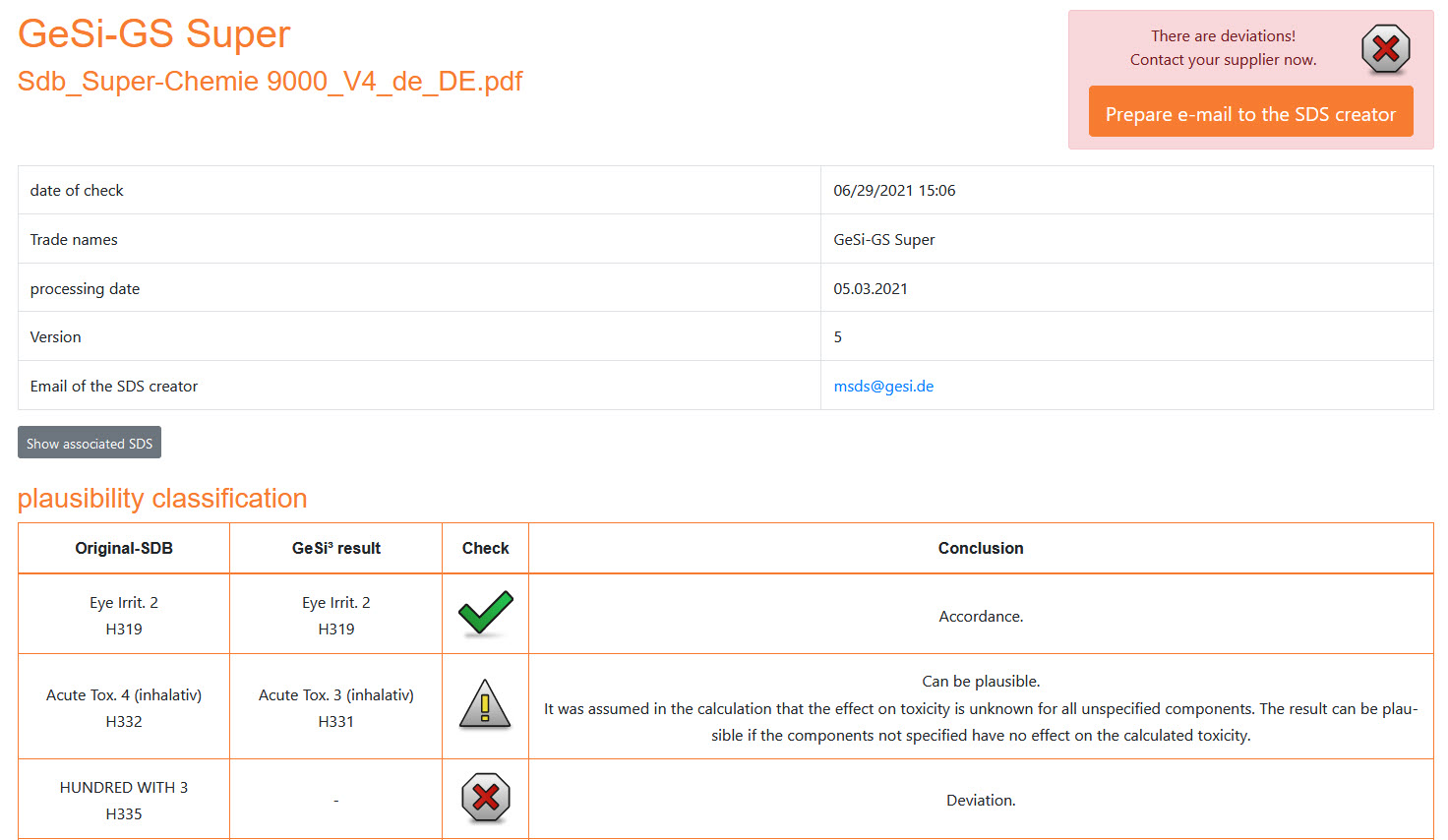Deviations in the safety data sheet
In my last blog post I dealt with why the plausibility check of safety data sheets is so important (and also obligatory in Germany according to TRGS 400 [1]). With our free online tool SDBcheck® (currently only available in German) you have a simple and convenient way to check classification and labelling. Ideally, you will not discover any discrepancies in the safety data sheet. In reality, however, this is often not the case.
SDBcheck®
Understanding the classification of mixtures is not an easy task. In addition to information on the mixture, for example pH value or physico-chemical hazards, information on the ingredients, for example the substance classification and the concentration range, is also relevant. All this information must be considered and used for the classification calculation. A trained eye can still recognize obvious deviations quite well. However, to do this manually for all your safety data sheets is hardly possible. SDScheck® reads your supplier SDS and uses the information to calculate the mixture classification according to the CLP Regulation [2]. In the best case, the determined and the given classification match, of course.
Deviations
Deviations in the safety data sheet in classification or labelling are displayed directly on SDBcheck® with a red cross. In the comparison of the classification you can see the determined hazard categories with the respective H-phrase. If, for example, an eye irritant effect (Eye Irrit. 2) is stated in the SDS, but SDBcheck® determines an eye damage (Eye Dam. 1), there is a discrepancy. The labelling is also compared. Here you can see whether the hazard pictograms, the signal word and the H-phrases of the labelling match. It can also be the case, for example, that the classification is plausible but the labelling is not. TRGS 400 specifies that the supplier must be contacted in the event of discrepancies and inconsistencies. This is also possible with SDBcheck®.
E-mail dispatch
If you use SDBcheck® as a registered user, you have the option to send an e-mail to the supplier if you find discrepancies in the SDS. You also have the option to add your own notes. The recipient of the e-mail receives the checked safety data sheet on the one hand and the results page on the other. This makes it possible to see directly where deviations occur and which data form the basis for the check. The SDS creator now has the possibility to contact you directly. It is possible, for example, that a new SDS is already in circulation in which the deviations have already been corrected.
Do you know what the plausibility of your supplier SDS looks like? Upload your SDS to SDScheck® free of charge and have it checked. Thanks to the integrated e-mail dispatch, you also directly fulfil the requirements of TRGS 400.
[1] Technical Rules for Hazardous Substances (ger. Technische Regeln für Gefahrstoffe), TRGS 400, as of 08.09.2017, BAuA website
[2] CLP Regulation No 1272/2008, consolidated version REACH-CLP-Biocide-Helpdesk (DE), as of 01.03.2022

